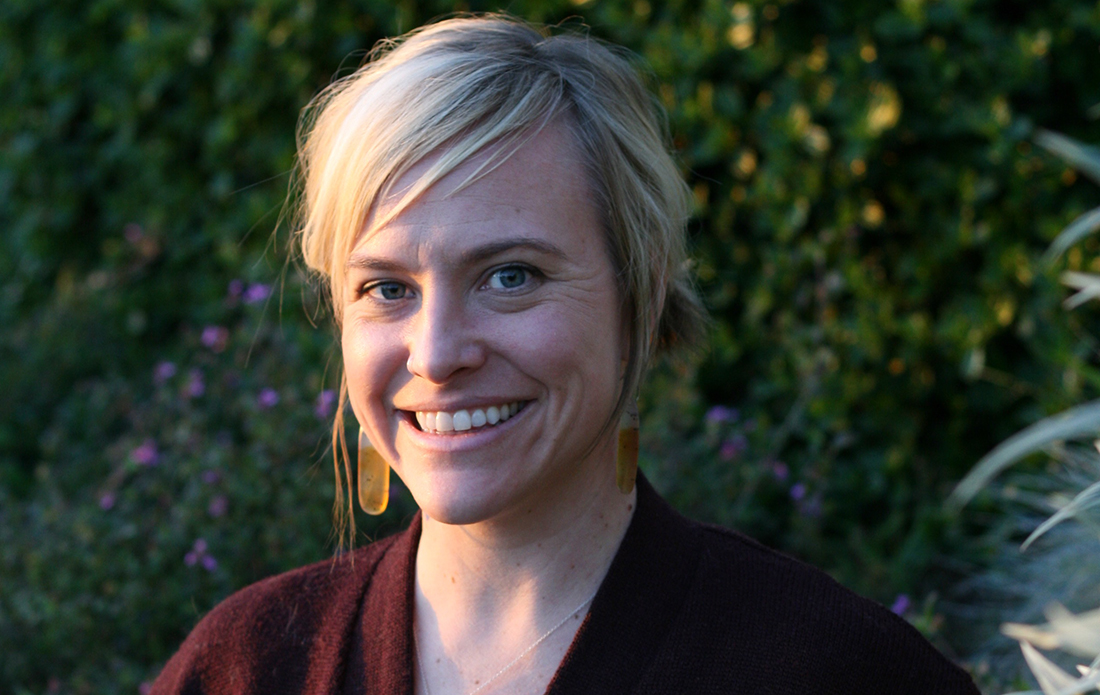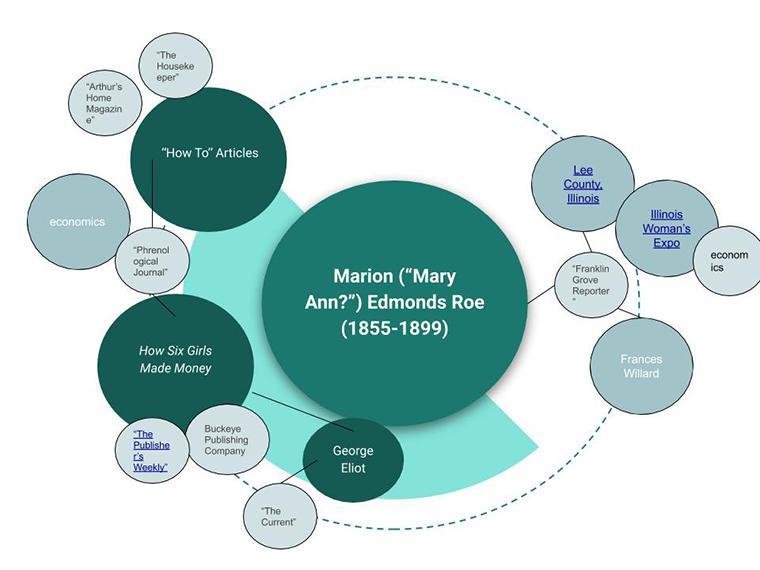
Finding the Gaps in History
With COVID-19 shutting down in-person archival research, Amy Lueck and her students dig through digitized historical documents online with the goal of publishing their own digital anthology.
Every historical narrative or analysis of literature is full of rhetorical choices, Assistant Professor Amy Lueck says. It’s not simply a telling of literary “history” as it was; instead, the voices that are included and those that are excluded are decisions—decisions that leave gaps.
“You might look at something and say, it’s a nice clean story and then realize, wait, there are no women,” Lueck says. “Those are the gaps.”
On her Women Writers and Literature syllabus, Lueck quotes German philosopher Walter Benjamin who says, “Every image of the past that is not recognized by the present as one of its concerns threatens to disappear irretrievably.” The quote serves as a goal for the course. With their work, Lueck wants her students to bring the voices of historically marginalized authors to the forefront and, in a way, help save those voices.
Rather than tests or papers, students in Lueck’s class will create a digital anthology of women writers from Santa Clara University’s Archives and Special Collections. The anthology will include a variety of works, everything from book excerpts to poems, essays, and even recipes.
“We’re using an expansive definition of literature,” Lueck says. “We want to interrogate what we mean by literature and what forms and genres and modes get counted as worth studying and preserving.”
In addition to selecting the pieces to include in the collection, students will write introductions to each piece, each one containing analysis and hyperlinked cross-references and supplemental media. Students will build the anthology using the online book design platform Scalar, and hope to publish it with Lever Press.
One of the challenges in this effort, understandably, is the lack of information available about the authors. As marginalized voices, these were authors not thought to be important during their time or after, so there’s a pronounced lack of existing scholarship.
The exciting prospect of this for Lueck is that because the research doesn’t exist, that means the students themselves are the scholars. The work they do isn’t just for a grade—it can actually better serve the goal of the course of centering these voices.

A visual map of research for Mary Edmonds Roe
Traditionally, research for a project like this would require hours spent in university archives with primary resources. Due to the pandemic, that wasn’t possible. Fortunately, thanks to the work of Nadia Nasr, Summer Shetenhelm, and Kelci Baughman McDowell in Archives & Special Collections, Lueck and her students are able to view all the documents they need digitally.
By focusing just on authors in the Santa Clara archive, the project is intentionally hyper local. Lueck says this helps students avoid a universalizing impulse that can arise in women’s literature courses where, rather than de-centering male writers, you create a new canon that marginalizes other women. This structure helps break them of this thinking.
One of the important early assignments in the class is a visual map students create for their research. For example, one of the authors the students examine is Marion Edmonds Roe. On the visual map, students would draw one bubble for Roe’s 1887 book, “How Six Women Made Money.” Another bubble might be the town she grew up in, or the “how-to” articles she used to write.
But what about her publishing company? What other kinds of works was it producing and what does that say about her writing?
“With this visual, I want them to understand the gaps and omissions,” Lueck says. “For example, the gaps for a woman author might be around her biography because no one cared to write a biography about her.”
Because so much of the work is uncharted territory and Lueck is asking students to take chances, she implemented a grading contract for the course. Rather than grading for quality of completed assignments, a grading contract values engagement. Students track meetings and discussions they have—everything from Zoom meetings to text messages count—and turn it into Lueck to determine their grade.
“Whatever modality works for them as a group, as long as they show evidence then they’re going to get credit for engaging with each other,” Lueck says. “It’s about naming and explicitly valuing what we all understand to be what a good student does, but it’s just making it transparent and giving you credit.”
Lueck is excited to see where the project goes because so much of the course has been built using non-traditional teaching methods. Rather than starting with all the answers and lecturing to her students, Lueck has been asking questions and letting the students lead the way. So far, they’ve responded well.
“I’ve said from the first week, I’m asking questions with you, I’m not answering them. I don’t even know what the answer is,” Lueck says. “I don’t know what choices the students are going to make or what they’re going to create. It’s a wicked problem but we’re going to solve it together.”